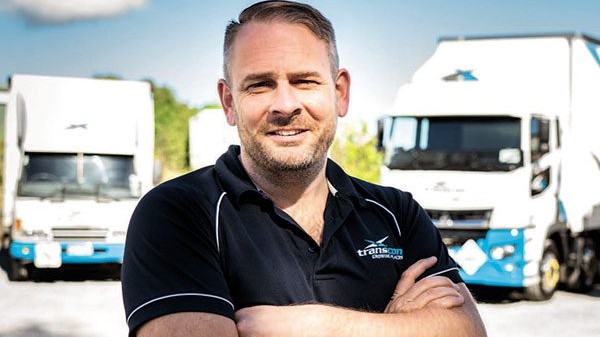How do we turn big brother into our favourite sibling?

The world looks set to grapple with labour and material shortages for the foreseeable future. Never before has a more logical – let alone necessary – opportunity presented itself to leverage technology to counter, and potentially leapfrog, the operational challenges stemming from the shortages.
It came from a recent conversation with a fellow transport operator about their transition from a paper-based planning and dispatch function to something a little more, shall we say, contemporary. There was some acknowledgement that a web-based transport management system (TMS) solution may provide some benefits and look a little neater. But the operator couldn’t get past the concept of the dispatch and planning task being ‘my job’, and ‘there’s no way a computer can do a better job than me’.
What blew my mind was the black- and-white view that there was no way technology could improve the outcome for the business. There appeared a total lack of comprehension that the implementation of even the simplest of web-based TMS (and we’re fortunate to have a host of locally developed options) could free the operator up to provide (some) freedom to focus on other critical areas of the business. And this was before we got to talking about some of the fleet and route-optimising technology starting to appear with the likes of M2X. Although still in its infancy, M2X clearly presents scope for a level of load optimisation that until now has been the domain of only the industry’s most seasoned dispatchers’ grey matter.
In the same vein, albeit with some significant industry adoption already achieved, is the genre of vehicle tracking and telematics systems a la EROAD, Coretex, Teletrac Navman etc. While I understand that an increasing minority of our fine industry continues to operate ‘off the grid’ to try and leverage the perceived benefits of running under the radar and fear of big brother, elements of this approach continue to perplex me. Have these operators properly deliberated how easily their fleet management and scheduling might shift for the better, let alone allow for greater insights for their team and customers alike? And that’s before we consider the time and stress savings of an auto-RUC solution to eliminate one of the more rudimental compliance tasks we must perform.
But, beyond the face-value application of the systems of tracking the movements of our fleets, what are we doing with the individual truck and operator data we’re gathering to deliver even greater benefit to our operations? We’ve recently had the good fortune of being connected with a third-party provider who’s seen to turning our masses of monthly driver data into meaningful-yet-simple scorecards. We’ve been able to utilise these as the basis for team-wide incentive programmes that, at the same time, have created a marked change in our driving performance and fuel consumption, both of which have obvious financial flow-ons. Better yet, the harnessing of this technology and active and thorough distribution of the outputs will be sure to make for a safer team on the road, surely a critical detail at the heart of every decision we make as operators? This is our data – let’s use it!
A rant about big brother and technology wouldn’t be complete without ducking down the in-cab camera rabbit hole! The provision of cameras within our fleets as a means of obtaining, at least, more favourable insurance terms can’t be far off becoming par for the course. But, in the meantime, I wonder how much benefit we could obtain before the carrot needs to be dangled before us. One doesn’t need to spend too much time in a dispatch office to quickly hear reports of dangerous acts of driving or road use that a driver might’ve seen on a given day. Empowering our driving teams through the provision of such widely available camera technology to capture these moments should be a priority, if for no other reason than to turn what can oft be ambiguous accident liability conversations into black-and-white decisions.
There is a raft of simpler standalone technologies that have come to market that also appear to be slower in uptake than their benefits might suggest they should experience. Take, for example, the electric pallet jack/trolley – a device that takes the laborious task out of loading and unloading units by hand. We seem lethargic to taking a longer-term view to how technology can make our lives easier and more productive.
I’m a believer that there’s a degree of inevitability to much of this technology becoming commonplace but I pose the question that in these times of shortages and the flow-on need for vast productivity gains, surely the very catalyst we’re looking for is right under our noses? The opportunity exists for us to eke out gains on all fronts by parking some of our preconceptions and instead focusing on turning big brother into our favourite sibling. Then, we can get them to do what we all want our siblings to do for us; the donkey work!
Read more
Adapting to the conditions
0 Comments5 Minutes
The greatest risk?
0 Comments6 Minutes



